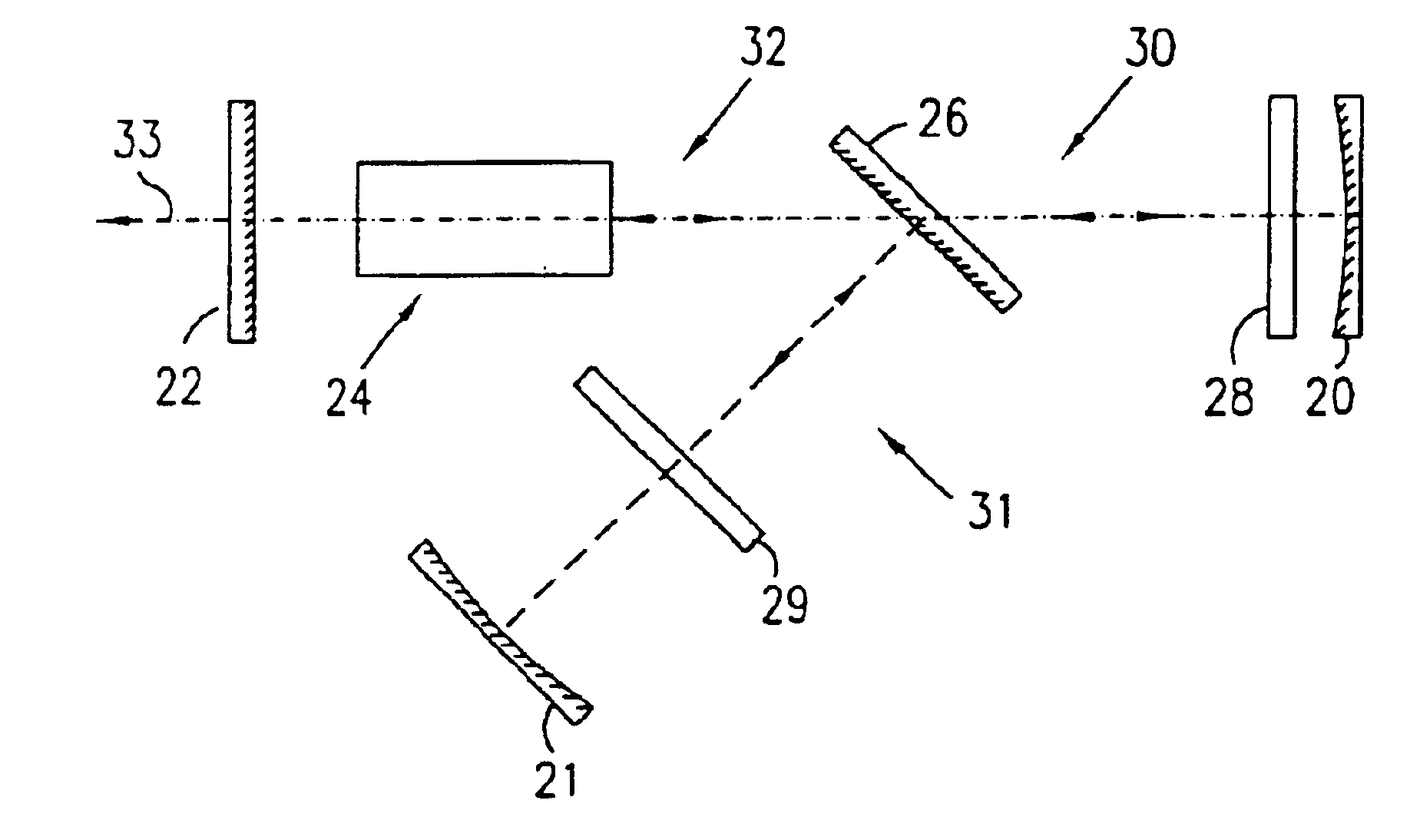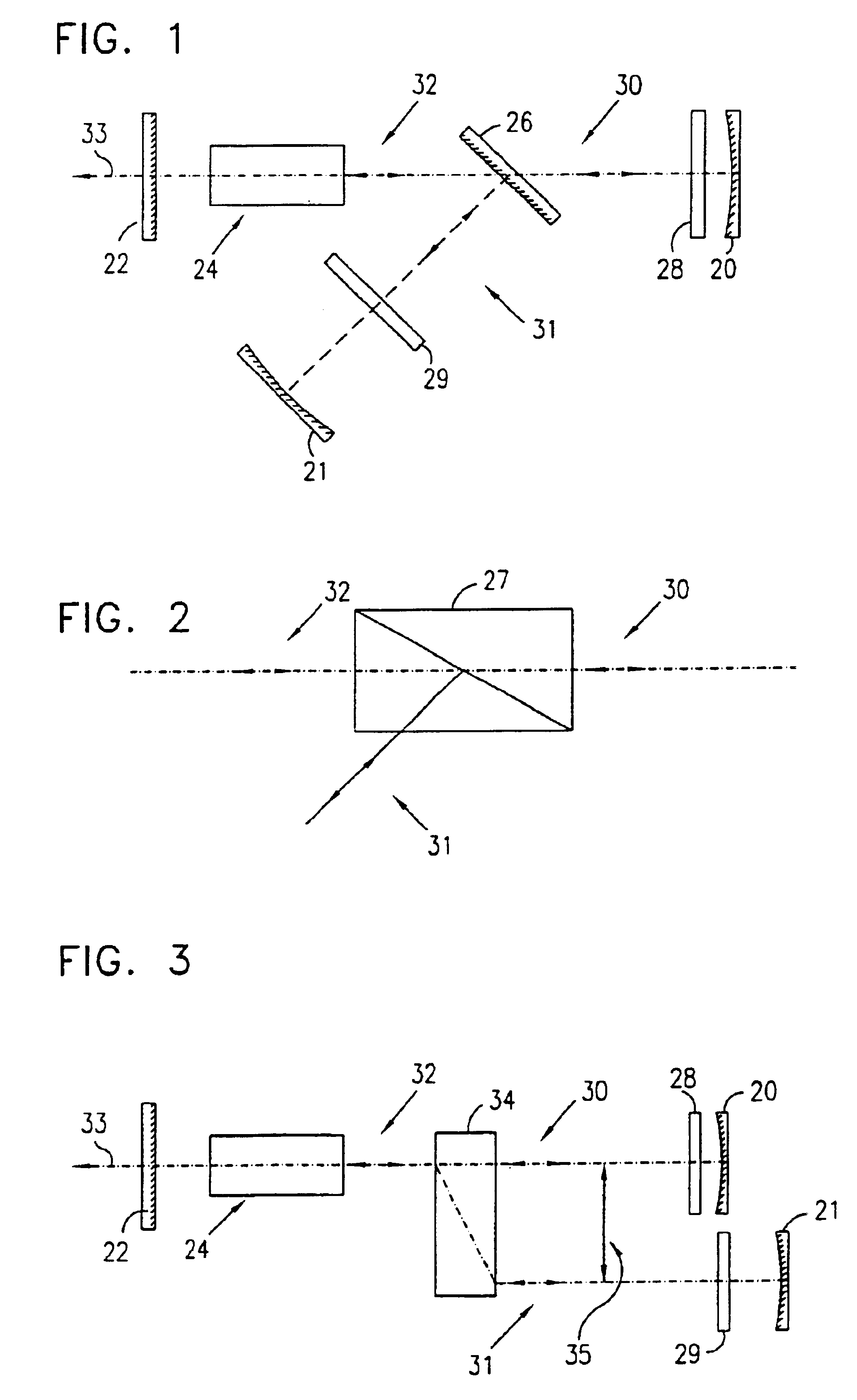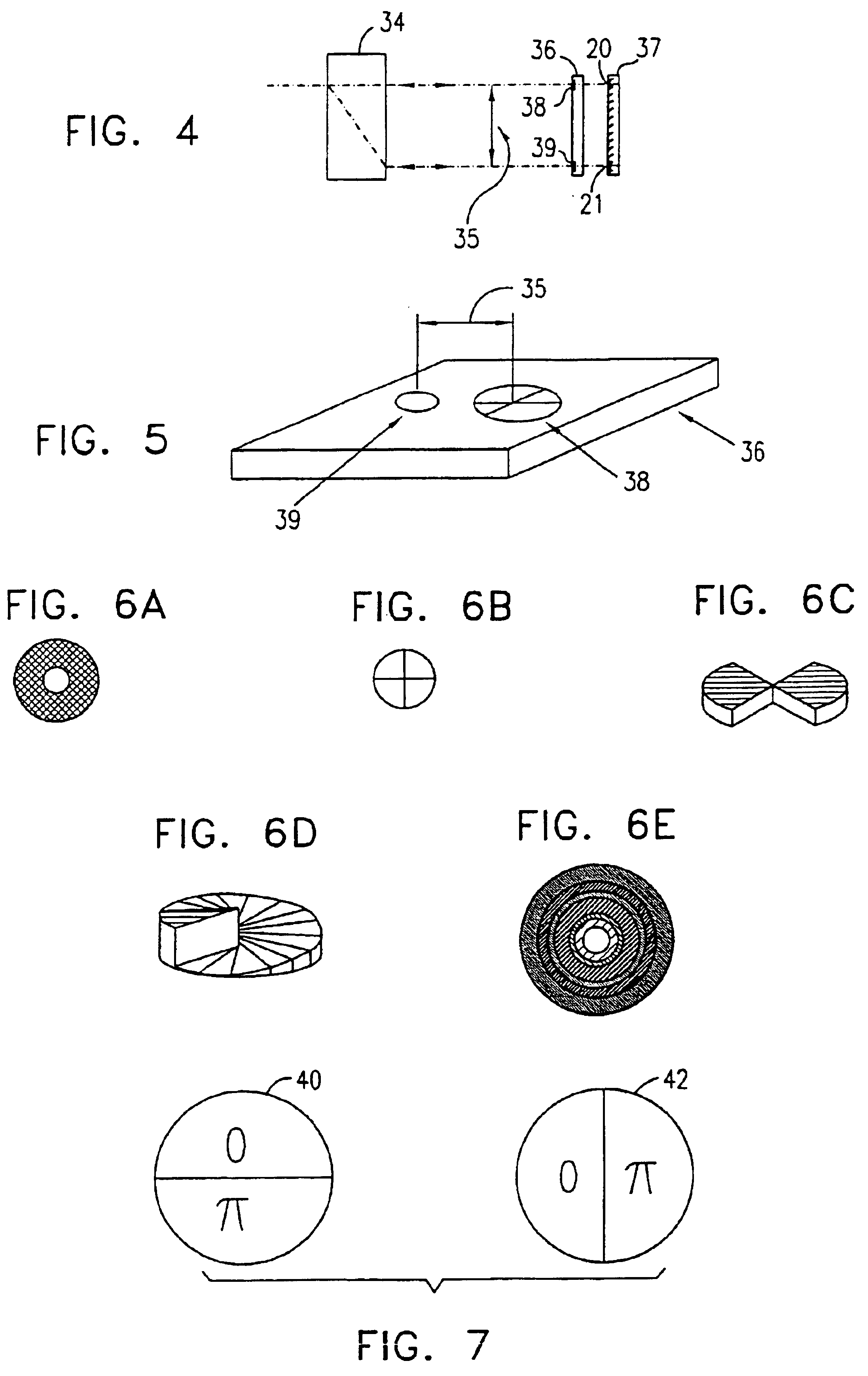Optical resonators with orthogonally polarized modes
a technology of optical resonators and orthogonal polarization, which is applied in the direction of optical resonator shape and construction, electrical equipment, laser details, etc., can solve the problem that the gain of any region utilized by one of the beams is no longer available for utilization by the other beam, and achieve the effect of increasing the utilization of gain medium, and increasing the utilization of laser gain volum
- Summary
- Abstract
- Description
- Claims
- Application Information
AI Technical Summary
Benefits of technology
Problems solved by technology
Method used
Image
Examples
Embodiment Construction
Reference is now made to FIG. 1, which is schematic illustration of a linear resonator of a laser constructed and operative in accordance with a preferred embodiment of the present invention. The linear resonator preferably consists of reflectors, preferably full reflectors 20 and 21 and a partial reflector or an output coupler 22, a gain medium 24, a thin film polarizing beam splitter 26 and two mode controlling elements 28 and 29. The beam splitter 26 reflects one polarization, hereinafter called polarization “1”, through control element 29 towards full reflector 21, and transmits the polarization orthogonal to polarization “1”, hereafter called polarization “2”. Two modes of oscillation, indicated by reference numbers 30 and 31 are thus established between the output coupler 22 and the reflectors 20 and 21 respectively. Both radiation associated with both modes 30 and 31 propagate through the gain medium 24. However, the radiation associated with mode 30 propagates through the mo...
PUM
 Login to View More
Login to View More Abstract
Description
Claims
Application Information
 Login to View More
Login to View More - R&D
- Intellectual Property
- Life Sciences
- Materials
- Tech Scout
- Unparalleled Data Quality
- Higher Quality Content
- 60% Fewer Hallucinations
Browse by: Latest US Patents, China's latest patents, Technical Efficacy Thesaurus, Application Domain, Technology Topic, Popular Technical Reports.
© 2025 PatSnap. All rights reserved.Legal|Privacy policy|Modern Slavery Act Transparency Statement|Sitemap|About US| Contact US: help@patsnap.com



